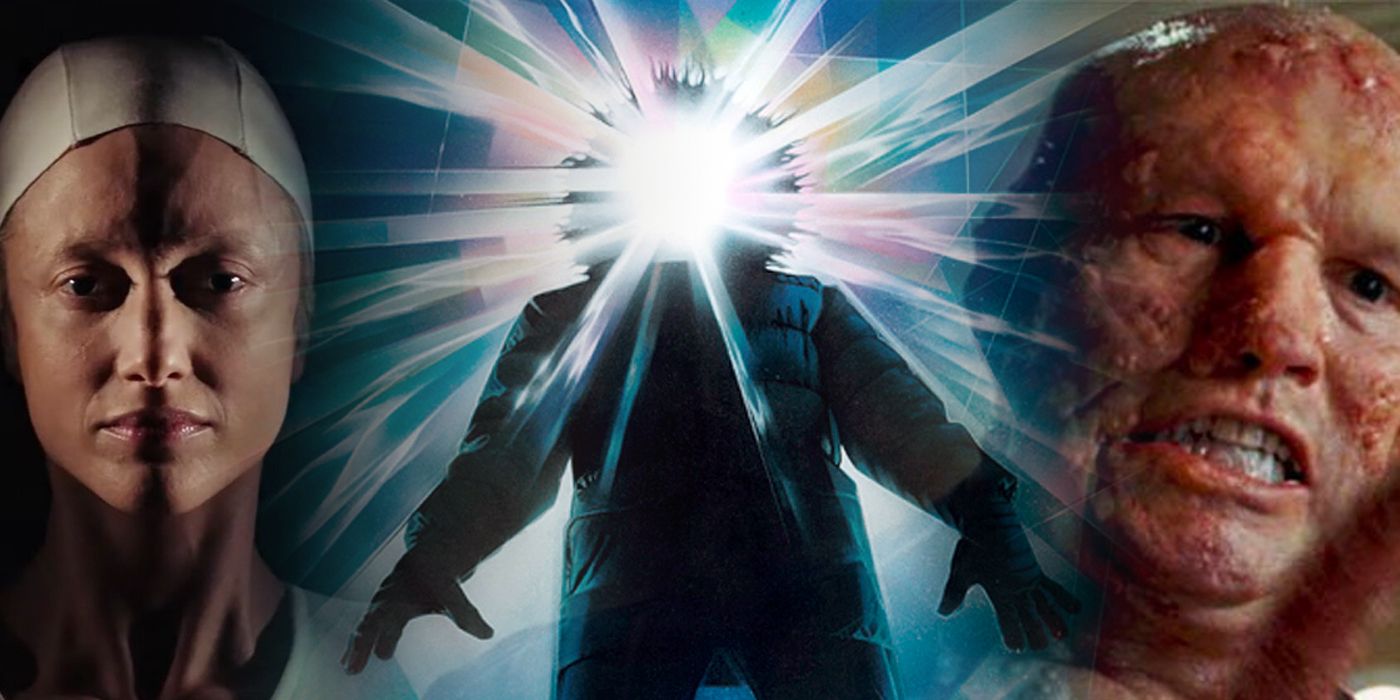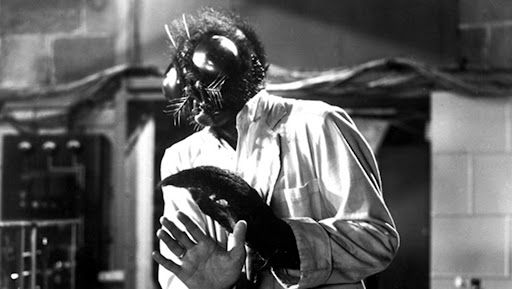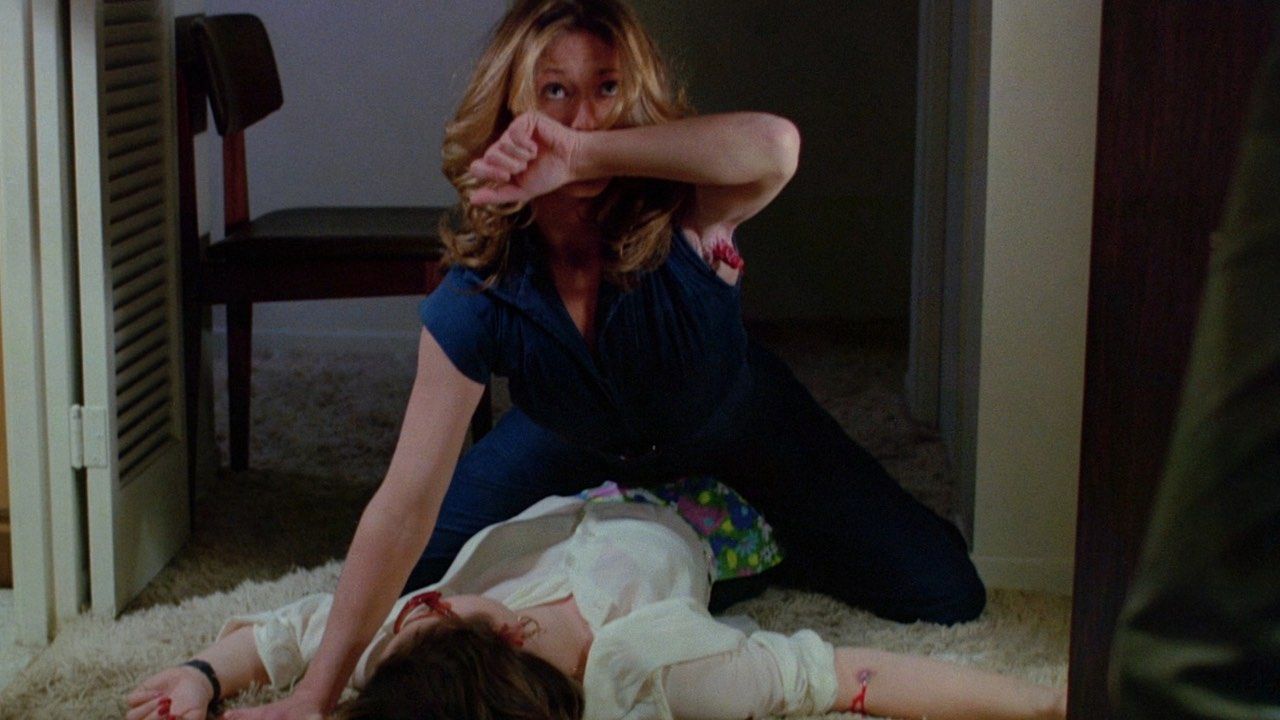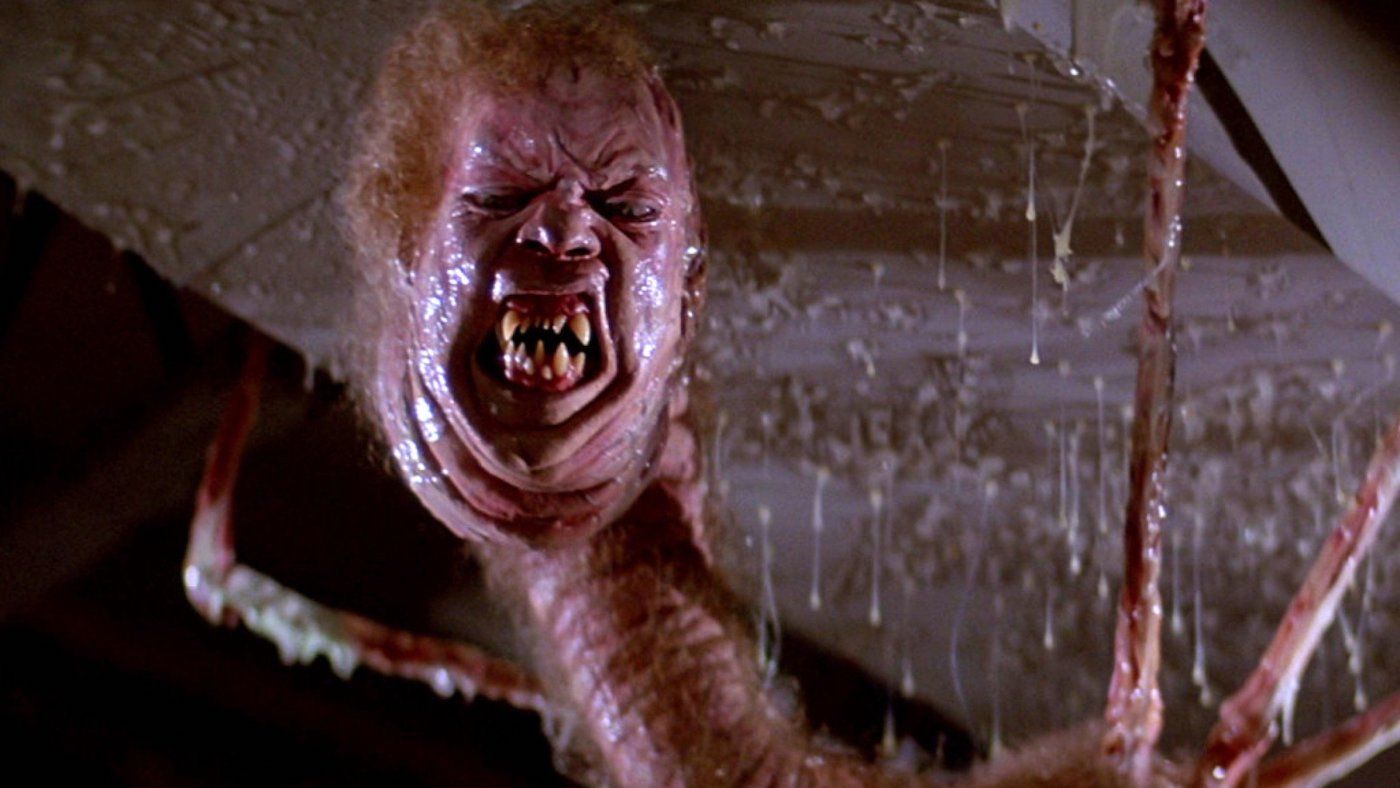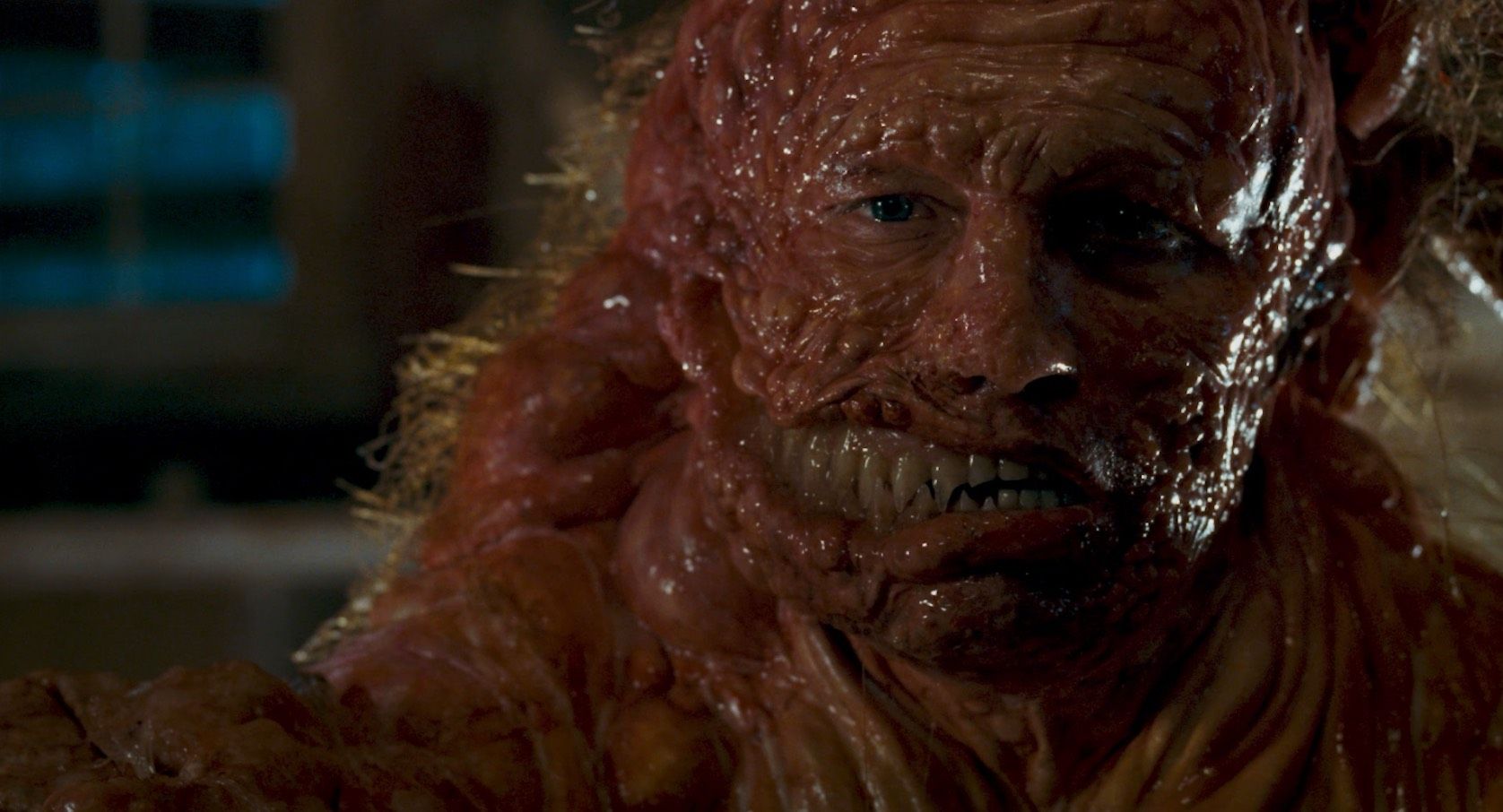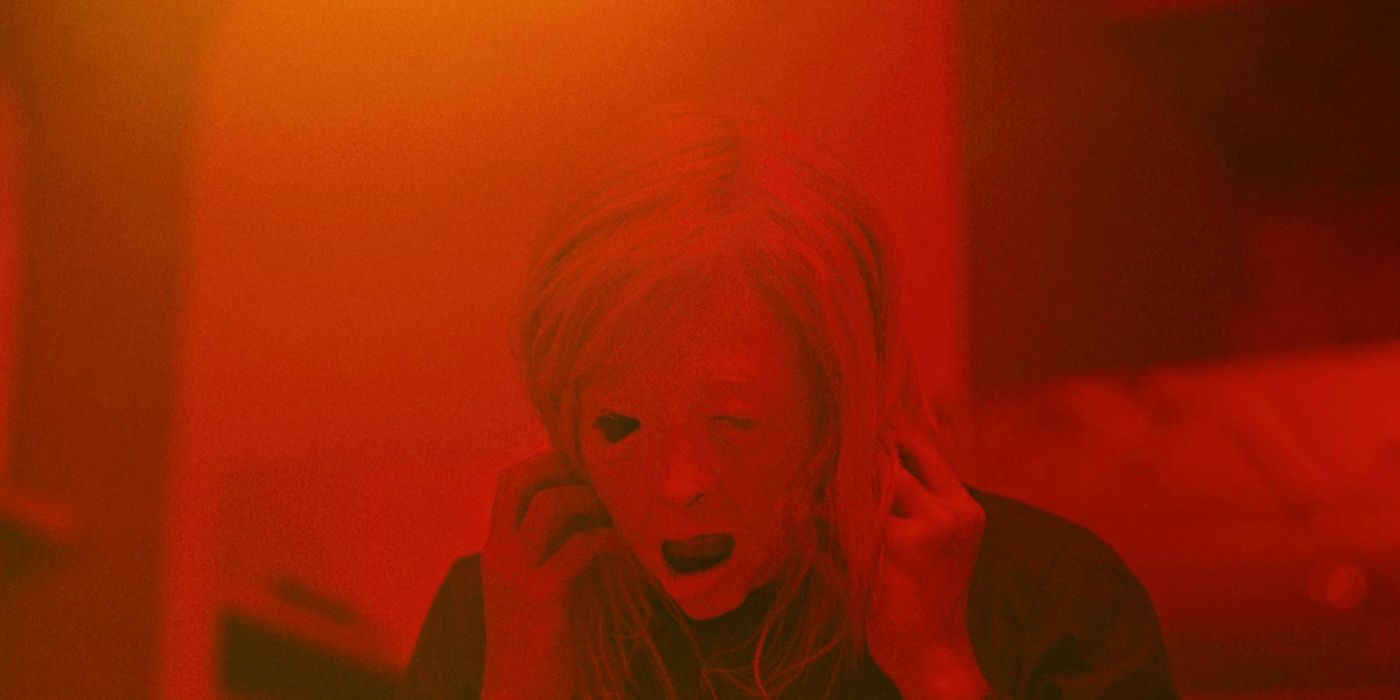Body horror has always been a popular and influential subgenre of horror. Films that fall under this subgenre often depict the changing of the human body, both in degrading or evolutionary ways, as a response to plot events. This change isn’t just for shock value, however, as body horror is often used by filmmakers as a metaphor for sociopolitical anxieties. While some of these anxieties still exist in today’s climate, the ways in which they’re presented have changed dramatically. Here are five of the most iconic body horror films that helped to shape the ever-evolving subgenre throughout the years.
The Fly (1958)
While The Fly's 1986 remake with Jeff Goldblum is seen as a classic within the subgenre, perhaps even more important was the original film directed by Kurt Neumann. When scientist André Delambre (David Hedison) invents a matter-transporter device, chaos ensues when a fly finds itself inside the other machine. As the film progresses, André begins to lose his humanity both figuratively and literally as he slowly transforms into a man-fly creature. While not scary or shocking by today’s standards, The Fly’s original incarnation helped introduce body horror’s core fear to audiences still in the midst of the Cold War. While disfiguration from nuclear fallout was a legitimate fear, perhaps more threatening was the idea of you or someone you love forcibly becoming a Communist. Unexpected change is the core tenant of body horror and possibly could not have been possible without The Fly’s influence.
Rabid (1977)
Did you know that one of horror’s most popular creatures are also prime examples of body horror? Zombies perfectly fit the subgenre’s motif of uncontrollable transformation and David Cronenberg helped popularize this idea with 1977’s Rabid. Following a horrific motorcycle accident and the resulting surgery, Rose (Marilyn Chambers) finds herself with a penchant for human blood when she discovers a stinger underneath her armpit. Her victims are then transformed into gruesome creatures who pass the infection onto others through violent feeding. Rabid not only contributed to the rise of the zombie in mainstream media, but it also helped to encourage more grizzly special effects in the film industry in general. Previous horror films, especially 1968’s Night of the Living Dead, were relatively bloodless even for the time. However, Rose’s disturbing decomposition and the ravenous bodies left in her wake helped make body horror, and the horror genre, distinctly nastier than any other genre.
The Thing (1982)
John Carpenter was becoming a name to be reckoned with when he released this remake of 1951’s The Thing From Another World. While it was previously deemed a flop upon release, The Thing proved highly influential for more than just its terrifying practical effects. Centering around a group of researchers in Antarctica targeted by a shape-shifting threat, the titular alien was not the only villain in the film. Rather, the film displayed how unaffected humans can be just as monstrous as the threat they’re trying to avoid. There is a certain unnerving quality to seeing these characters succumb to paranoia and rage. Thanks to The Thing, the physical body is not the only part affected in body horror, but the unraveling of the mind as well.
Slither (2006)
Out of all the films on this list, James Gunn’s cult breakout Slither is perhaps the most grotesque. A crater filled with parasitic aliens crash lands into a small South Carolina town, inadvertently infecting the gloriously named Grant Grant (Michael Rooker) as its new host. Unfortunately, the invasion escalates throughout town, leaving only a small group of survivors standing. While it doesn’t particularly bring anything new to the table, its gross-out effects and keen sense of self-awareness position itself as a homage to body horror’s late 1950s beginnings. It just so happens to be nastier and with a slightly higher budget. Made in a time where many mainstream horror films took themselves too seriously and darkly, Slither is still a breath of fresh air.
Possessor (2020)
This modern age of body horror often harkens back to its predecessors while also offering new perspectives on what makes transformation terrifying. In Brandon Cronenberg’s case, he obviously had big shoes to fill in the wake of Possessor’s release, not just in terms of the genre but being the son of one of the subgenre’s most important auteurs. Body-hopping assassin Vos (Andrea Riseborough) finds herself in a mission gone wrong as she gets trapped inside the mind and body of her unknowing host Tate (Christopher Abbott). Although there is certainly some gnarly violence in the film, its real horror lies in Vos and Tate’s collective loss of their personal identities. Combining elements of more high-brow horror with classic subgenre ideas, Possessor is a prime example of our current era of body horror, one that embraces both new and old.

